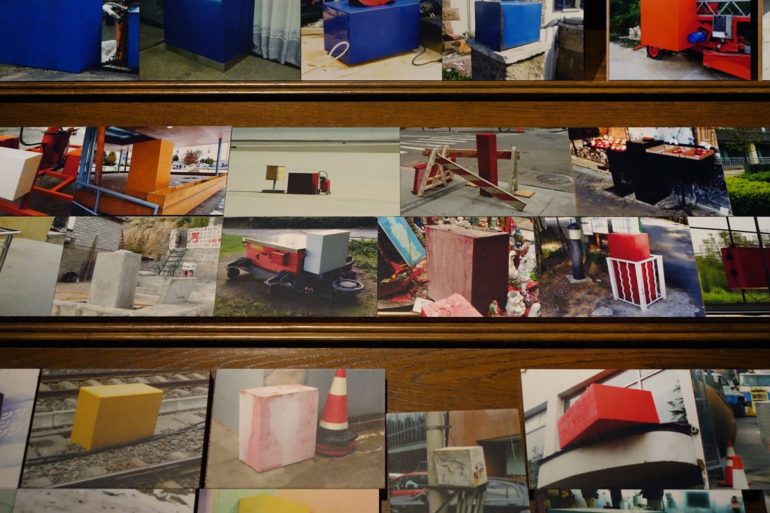Pohled do expozice části dějin.

Snowballs, 2014, mixed media, 12 × 12 × 12 cm each ball, inside are photographs from the gulag in Russia.

Chaplin’s Proun, 2014, projection, plastic, metal, variable dimensions

Shooting Star (Lenin), 2016, bronze, 20 × 10 × 10 cm

Plow, 2016, Statue of V. I. Lenin 1980 – bronze, 300 x 150 x 150 cm
Plow (Proposal for the revitalization of the statue of V. I. Lenin) — 2005
— Operational use of this statue in agriculture for the purpose of cultivating the landscape
— In case of a defect, the possibility of using a plowshare or steel reinforcement
— Possibility of using the chassis from a tracked vehicle
— Possibility of using combat equipment
— Possibility of removing any part of the statue in order to improve the quality of plowing




Curtain, 2013, 400 x 400 cm, Forex reflectors, textile, metal
The day the snow fell on the burning fields.
Drapery, simply put, forms a boundary between a two-dimensional and three-dimensional object. The curtain is a statue of the space in between, a statue covering the space, but also creating or referring to other spaces. It would seem that previously it was a rather dynamic entity, that it possessed the identity of a revolutionary flag, the muleta of a bullfighter or Superman’s cape. Its function was to hang and elastically respond to the environment around it, to hide secrets, to stir the senses.

Installation of the exhibition in the history section.


Monument to the Victims of the Revolution — 2008
The memorial consists of a monumental flag submerged under the water surface of the river. To prevent it from being carried away by the water, an anchor is provided at the lower end of the pole. The safety ropes connecting the pole to the bridge structure located not far upstream of the river also serve the same purpose. The bridge is very important for the functioning of the flag, because it should create an ideal stage for spectators who observe the memorial, because it is convenient to look at it from above.
The flag should be made of a very strong material resistant to the environment in flowing water. The material should also be elastic to create the desired ripples. Another of its properties is light reflectivity. In this regard, two
alternative solutions can be chosen:
The flag will be made of a material that can meet both the required properties, i.e. elasticity and reflectivity.
If such material cannot be obtained, it is possible to apply reflective plastic plates to the flag
The pole should include two aerodynamic profile rods, at the ends of which durable reflectors suitable for operation under water will be firmly attached. These lights will guarantee the desired drama and enigmatic appearance of the scene, especially at night. A mechanical rocker will be firmly attached to the top of the pole, reacting to the flow of water by tilting the blades that resist the water. The rocker, moved in this way, is able to wave the flag using a lever, thus giving it the desired dynamics and therefore drama.


Real Minimalism, (photographic archives documenting minimalist in the form of a rectangular block objects in real environment all over the country), 2010–2013, digital prints on MDF boards


Anachronistic radio, 2014-16, mixed media, variable dimensions
Anachronistic radio communicates interactively with the viewer. It senses their movement in space and responds to each change by retuning the station. What the device then plays does not reflect the current presence, but difficult-to-guess broadcasts from the past, which seem to speak from timelessness. So try to find stations in the space in front of this radio receiver that bring events from history to life.